Certain limitations do apply, please call for more details.
For Service Now, Call Us Right Now!
- HVAC Contractor
- HVAC Repair
- HVAC Installation
- Furnace Repair
- Furnace Installation
- Heat Pump Repair
- Heat Pump Installation
- Central Heating Repair
- Central Heating Installation
- Heating and Cooling Repair
- Heating and Cooling Installation
- Air Conditioner Repair
- Air Conditioning Installation
- Air Duct Cleaning Services
- Ductless Heating and AC Services
- Install AC
- Install Ducts and Vents
- Install Heating System
- Install Thermostat
- AC Maintenance
- Heating Maintenance
- HVAC Maintenance
- Repair AC
- Repair Ducts and Vents
- Repair Heating System
- Repair HVAC
- Repair Thermostat
- Clean Ducts and Vents
off

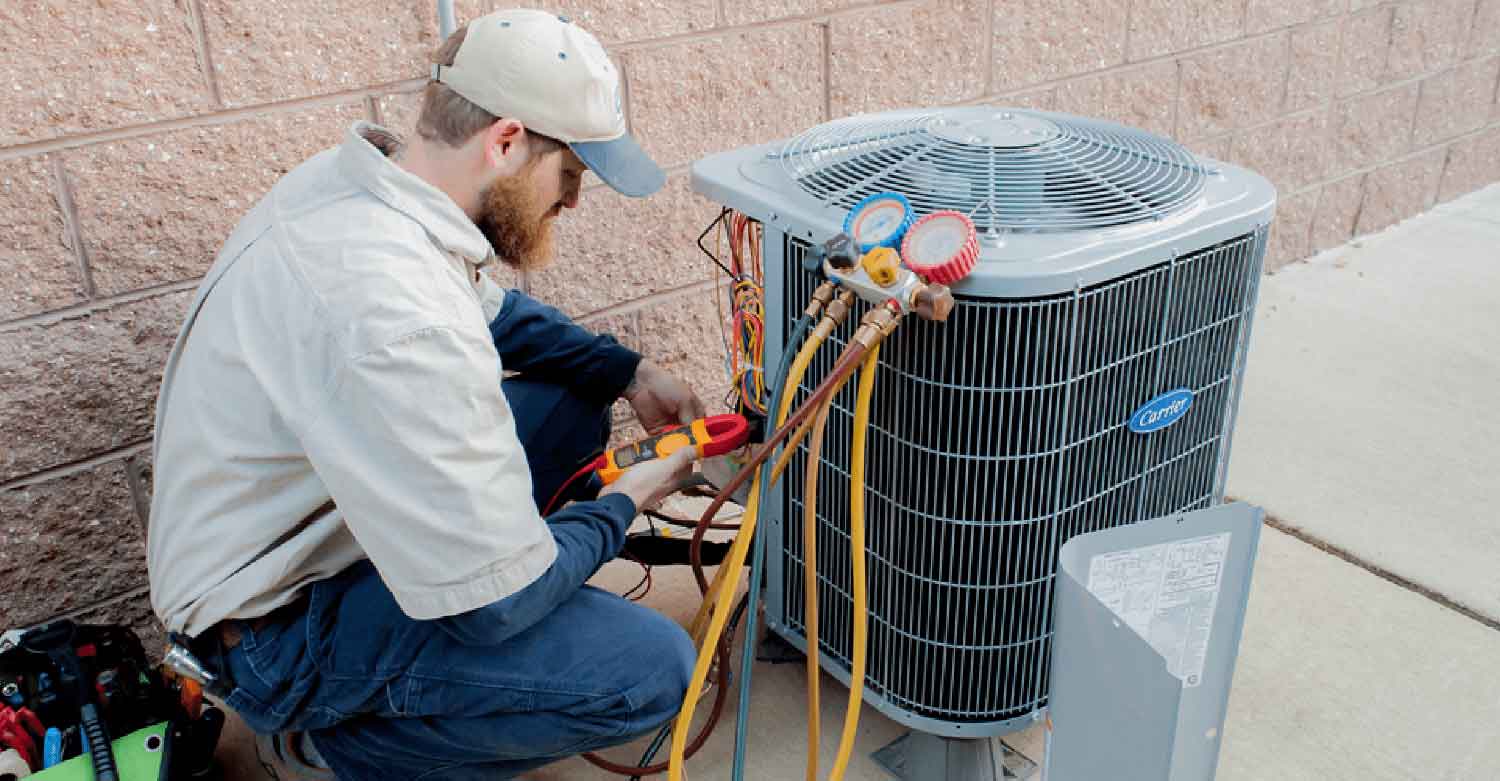
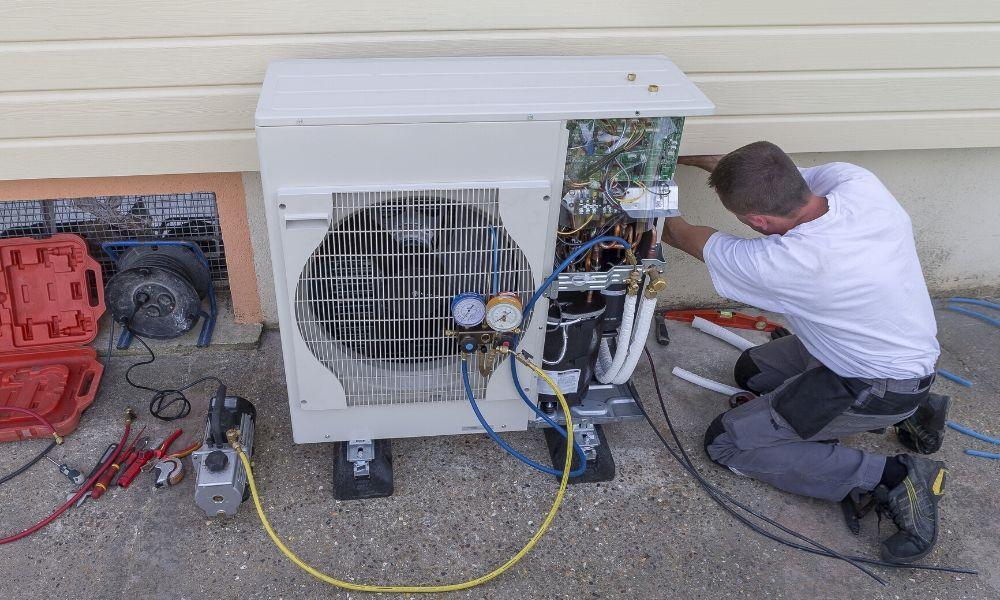
Furnace Repair: 9 Common Furnace Problems (And How to Fix Them)
Are you experiencing issues with your furnace? up? In the event that you're furnace causing you issues, don't fret that you're not the only one. In this blog we'll discuss those 19 common furnace problems and how to solve them.
We will also offer suggestions regarding furnace maintenance so that you are able to avoid problems completely. Stay tuned to find out more furnace repair information!
Examine Your Furnace Thermostat to ensure it's on
If your furnace isn't turning on it is possible to examine the thermostat wiring. The thermostats operate on the low voltage. So should you find that the white and red wires aren't connected, then you may want to take pictures.
After that, connect the wires by twisting them. If you don't have a picture then you could always change the thermostat.
If you want to test the thermostat, switch it off.
The power source for the device can be described as the electric system. The power switch is situated inside the circuit box for breaker. If your home is struck by an electrical failure then it is likely to trigger the circuit breakers.
Be sure to shut off the power prior to you attempt to repair your thermostat. If the problem continues then you must seek out an furnace repair technician.
After you've set the temperature, you should check the thermostat once more.
The thermostat could have been switched off accidentally or it may need new batteries. It's very easy to switch off the furnace while cleaning or dusting the house.
Make sure that the thermostat on your furnace is set to the temperature you desire at least five degrees more than the room temperature. Check your furnace's battery.
The furnace's lights could be indicating that the furnace is on. If not, you should check the accuracy of your thermostat making use of an indoor thermometer. If you do not have one, download an app that allows you to test the temperature inside.
The key will inform you of the code and the setting that must be changed. If you're certain that it's turned working, you're ready to seek out an furnace repair professional.
Furnace is Not Producing Heated Air - Try to Reset Home Circuit Breaker
When your furnace has stopped producing heat It could be because you are trying to reset your circuit breaker in your home. The circuit breaker that controls your furnace is at the top of the panel for breaker. By resetting it, you can bring the furnace back on.
Be sure to set your thermostat for a higher temperature first, so that the furnace is working. After that, try turning the furnace back on , and verifying the settings.
In certain instances the furnace could be shut off in the event of an outage of power.
Verify the valves for debris, or check if they're adjusted to "on" and "off." Turn off your heating system's blower motor (which is next to the heat exchanger), which will flash to show that it's operating correctly.
A malfunctioning or dirty blower motor may also cause an outage in power and you should be aware of these problems. If none of these methods perform, you should contact an experienced furnace repair service to help identify the issue.
Another reason for furnace problems is an unresponsive thermostat.
The thermostat is a piece of equipment that is installed inside your furnace that lets you control the temperature inside your home. If you've recently updated your house, make sure you check the thermostat's wiring for any problems.
If your thermostat has broken wires then you can repair it by splicing the wire with electrical tape. Another issue that is common can be caused by the fact that thermostat's battery have gone out. In this situation the thermostat will go back to its default settings.
If your furnace is able to trip the breaker circuit, this could be due to a blocked air filter.
Dirty filters block airflow and force the furnace to be more efficient. The increased power consumption can create an overload in the circuit and could cause it to trip the circuit breaker in your home.
If that's the case, be sure to inspect the filters each month to make sure they're clean. If you find that these steps aren't sufficient for you, you may have to speak with an furnace repair professional to diagnose the issue.
Furnace is Not Producing Enough Heat - Check and Change Your Clogged Filter
If your furnace isn't producing enough heat Check the filter. Filter obstructions filters can reduce the amount of air passing across your furnace. This could be an indication of a problem with the limit switch or issue with airflow.
If your furnace seems to be cycling between a constant and a continuous basis it could be due to a blocked filter or an insufficient airflow. In this case, contact an furnace repair professional to diagnose the issue.
The furnace's filter must be changed at least at least every 6 months.
You can set a regular reminder to check it once a month. Filter obstructions filters can affect the performance of your furnace and that is why the need to change them frequently is vital. It is possible to purchase filters in a big retail store, for as low as $6.
You can change your filters regularly, as often as six months during the entire year. This is typically enough for one furnace.
If your furnace isn't making adequate heat via your heat exchanger, you should change the filter.
A blocked filter can impede the airflow , making your furnace operate more effectively. This causes it to operate more frequently, leading to more energy use and higher costs for utilities. This could also cause the limit switch in your furnace to fail, which can lead to the need for a significant furnace repair cost. Make sure to change your filter now!
Safety Switch on Furnace Door
In regards to the security of your furnace, it is recommended to examine the safety Switch on your Furnace Door to make sure it is operating effectively. This is essential to protect your family from the harmful fumes which could be released from your furnace.
When you take off access panel access panel, this switch will stop it from turning off and bringing loose material in the blaster heat exchanger and burner. To ensure your safety is secure, examine the safety switch frequently.
This switch can be normally found in the control panel, behind the furnace's door.
It is evident when the door is opened, however, it might require removal to determine the issue. The wiring of the switch and its connection are visible to technicians. Based on the type of switch, the electrical problem may result from an unbalanced circuit within the wiring or switch connection.
In both cases it is essential to follow the instructions of the manufacturer regarding furnace repair and installation.
A malfunctioning safety switch can cause your furnace to stop getting started.
The switch detects whether there is a flame. When there is a flame, the flame sensor is dirty, carbon or dust particles will build up. In the end, it might not be able to detect the flame and turn off your furnace to protect yourself.
If this occurs then you might need to change the safety switch in your furnace. It may be necessary to replace the entire unit to avoid further harm. The safety switch can be found on the door to the furnace and is essential for proper operation.
Keep the Area Around Your Furnace Clean and Unobstructed
To boost effectiveness of the furnace maintain the area around it clear and free of obstructions. Change the filter is a ideal time to do it each 30 or 90 days, and plan a routine check-up every year.
The room around the furnace should contain no substances that can ignite. Regularly cleaning the space around your furnace can prevent the dust, along with other particles of lint particles from becoming a problem.
When you see that your flames of your furnace have turned yellow or you smell propane, your vents have become blocked.
Make use of a vacuum cleaner to get rid of the dirt. Make sure that the furnace is switched off prior to performing the task. The burner assembly needs to be cleaned each year and replaced if in poor shape.
Cleaning your surrounding area around your furnace on a regular basis will help prevent a variety of issues. Particularly, be sure you take out any curtains, furniture or other things which could block vents.
Alongside cleaning the surrounding area of your furnace, you must prepare your home for weather to stop drafts.
To reduce drafts To reduce drafts, use caulking or weather stripping on windows and doors. If your attic is not well insulate, you can put up curtains that are insulated to help keep warm air inside.
The replacement of the furnace air filter is another way to ensure the furnace running efficiently. Replace your filter each 3 months, or when advised from the maker.
Clean the areas around your furnace frequently.
The dust and other particles can build up within the vents, resulting in an unpleasant smell. When you feel your air is becoming filthy, you should change the filter, or get it examined by a certified air conditioning and furnace repair technician.
When the filters are dirty, they could be a sign of a problem with the furnace. The filter's replacement can stop these issues from happening.
Look at the Furnace Burner Flames
If your furnace emits orange or yellow flames then it's the time to contact a qualified air conditioning technician for furnace repair. A technician is in a position to identify the problem and decide on the most effective option for you. Other possibilities are cleaning the furnace or replacing it completely.
Electricity and gas could be risky
Therefore, calling an experienced HVAC technician who can handle furnace repairs is your safest choice. This article will show you how to check the flames of your furnace.
The furnace's burner flames should be blue and even.
Flames that flicker indicate a greater issue that could cause harmful carbon monoxide emissions. If the flames appear red or yellow, turn the furnace down as well as contact the air conditioning professional for furnace repair.
Do not try to change the flames by yourself. This issue should be dealt with in the hands of a specialist as quickly as it is feasible. If you don't you could have the possibility of a fire in your home.
The color of the furnace's flame must be either blue or light blue. If the flame is mostly blue and has an elongated light blue triangle in its center is the ideal. A flame that's mostly yellow or blue with just a little bit of yellow is a sign of incorrect combustion.
This kind of flame signifies an efficient furnace that has no moisture or contaminants. A poor combustion could lead to increased energy costs, more carbon monoxide, and soot in your home.
Oil Up the Furnace Blower and Heat Exchanger Once a Year
When you grease your furnace's blower motor, you are insuring you are ensuring that the heating system is working at the highest effectiveness. It is possible to check this by looking at the furnace's motor. It could be situated on rails that are in the bottom of your furnace, or perhaps you require removing the access panel to find it.
Oil ports are typically located on the opposite sides of the engine. These ports can be covered in colorful caps. Fill them up with the right amount of the oil you want to use. Make sure not to overfill the ports since this may result in a leak or difficult to clean stain.
In the event that the motor becomes too dirty, it may overheat causing a mechanical malfunction or an electrical short.
But modern blower motors come with electronic components to avoid overheating and shutting off independently. After this issue is solved the furnace will operate normal, though it may take a few minutes. If you hear some unusual noises emanating from the furnace while it's in operation, call an experienced HVAC technician who can handle furnace repairs.
It's not unusual to see your furnace be on and off frequently.
It could be an indication of a dirty blower which could prevent both the fan and heat exchanger from operating efficiently or at all. It's recommended to wash your blower motor wheel frequently, since the dirty blower motor wheels can be costly to replace. It is also possible to employ the air filter to prevent dirt from accumulating on the wheel of the blower.
Furnace Does Not Blow Air
If your furnace isn't blowing air, there are various issues to examine first. If your furnace isn't producing air it is likely that the issue is related to it's blower motor. The device that drives air to move through the registers of your home. If you're not getting the desired results, it's likely to be a problem with the blower or heat exchanger. Another possible cause is an inoperable limit control switch, or a faulty capacitor.
If the issue continues then you should look at the thermostat to determine whether it's set to"heat" or "heat" setting. Be sure to set the thermostat's temperature to a higher temperature that it is indoor temperature.
The furnace won't be able to deliver heating when the power is not on. If your furnace is not working check the power supply to it by switching off the switch for fan and ensure your circuit breakers are in "on" setting.
Make sure you check the temperature.
If it is powered by batteries, it is necessary to replace them. The majority of thermostats depend on power from the central source, however others use batteries and fail when they're exhausted. If the battery is dead the thermostat will not send an incorrect temperature signal.
Make sure that the thermostat is securely attached to the wall and that the wires aren't loose. If none of these solutions resolve your issue, it's time to contact an service technician.
Check the filter first. Your furnace will only be as efficient as the filter it's using. Dirty filters can impact the efficiency of your furnace and require replacement. The circuit breakers of your furnace have to be switched on, however you can use them to make sure they're turned on.
If the filter is clean The furnace will operate more effectively. It is then time to test the thermostat and be sure that it's set to the right temperature.
Flame Sensor Maintenance
To cleanse your flame sensor, use emery paper or light-grit sandpaper. Do not rub your flame sensor too hard, because you may result in it breaking. Clean up any buildup of soot using an unlinty cloth. Install your flame sensor by reconnecting the wiring and tightening the mounting screws.
Attach your access panel to the furnace access panel and test it. You might need for replacement of your flame sensor if the furnace is not working properly.
Its flame sensor is a crucial component in your furnace.
An unfunctioning flame sensor can cause a fire alarm. A defective flame sensor will be unable to detect heat correctly if its porcelain cover is cracked. In the event of this, you should replace it. If it's covered in carbon then you can cleanse the sensor yourself.
After cleaning the furnace After cleaning, you are able to return your furnace to its normal operating condition. Make sure to adhere to the manufacturer's recommendations carefully because they are crucial.
Noisy Furnace or Duct Work
Noisy Furnace or Ducted Work? In the event that the heating system is making sounds that go beyond your comfort and level, you might want to examine the issue. While some sounds are normal however, others could indicate an issue with the system.
A loud furnace can mean many factors, such as an excess thermal expansion of the ducts, scratches in the sheet metal and broken or worn motor bearings.
The primary cause of the sound of a furnace is an issue with the ductwork system.
Ductwork circulates air and when the air isn't moving properly the sound can be uncomfortable. If you're hearing the type of noise that you hear then you must upgrade or upgrade your heating as well as cooling system by an ductless model.
It's much easier to do these repairs yourself. The tips below will assist you in locating the cause of your furnace's hum or ductwork.
Check the thermostat first. In the event that your furnace has been set for "heat" but it isn't blowing air, you may have to reset the thermostat. In other cases, you can open the door to your furnace and then wait for it to begin working.
If this isn't enough to solve the issue, contact the HVAC technician who specializes in furnace repairs. You could also cover the vents with duct tape to block any future noise.
Another reason behind a loud furnace is the accumulation of dirt and other debris.
Dirty filters are able to block airflow and trap warm air inside the ductwork. These buildups can cause an eerie sound that is caused by warm air backing up and expanding within the ducts. A thorough cleaning of the ducts can aid in removing this buildup, decreasing the frequency of banging sound.
A 1-Motor or Ductwork will assist you in determining the cause of the noise and provide an effective way to deal with the issue.
Many reasons exist to contact for an HVAC technician.
Sometimes, a minor issue in an HVAC unit can be solved on your own, but at there are times when you'll require assistance from a professional. There are many components within your HVAC unit that could require repair or replacement. repair. A technician can help determine whether a component requires repair or replacement. repair.
A professional who can perform regular maintenance will also ensure that your HVAC system is secure and efficient.
A certified HVAC technician has a vast number of years of knowledge in their area of expertise.
They will conduct an in-depth assessment of your house and will examine the design windows, ductwork and the insulation levels. The goal is to ensure the system is operating properly for many years to take. A HVAC technician will offer you an extensive written agreement and address all of your questions.
A licensed technician is likely to provide tax credits or rebates on your brand new HVAC system.
Certain HVAC components could begin to make odd noises. This can happen during heating or cooling seasons, and may be an indication of a more serious issue. It is possible to resolve these issues by cleaning your ductwork or by replacing the dirty filter, but if you suspect that there is a bigger issue, it is recommended to contact an HVAC technician for expert assistance. In the end, it will cut down the furnace repair cost and a number of hassles.
[geocentric_weather id="8bc31280-b571-4bb4-8612-bcaf98ed49c0"] [geocentric_about id="8bc31280-b571-4bb4-8612-bcaf98ed49c0"] [geocentric_neighborhoods id="8bc31280-b571-4bb4-8612-bcaf98ed49c0"] [geocentric_thingstodo id="8bc31280-b571-4bb4-8612-bcaf98ed49c0"] [geocentric_busstops id="8bc31280-b571-4bb4-8612-bcaf98ed49c0"] [geocentric_mapembed id="8bc31280-b571-4bb4-8612-bcaf98ed49c0"] [geocentric_drivingdirections id="8bc31280-b571-4bb4-8612-bcaf98ed49c0"] [geocentric_reviews id="8bc31280-b571-4bb4-8612-bcaf98ed49c0"]Key Benefits
Our approach has been simple. Provide a competitive price using qualified HVAC technicians with no hidden fees, backed by a 100% guarantee on workmanship. Our HVAC contractors are available now for any heating and cooling repairs or installation services for your home or business.
Professional Team
Factory Trained Technicians: We only employ factory trained technicians, they’re the best in the industry. Your work will be done right the first time.
Work done on Time
With over 25 years of experience in the industry, we boast all of the knowledge and expertise needed to handle even your most stubborn HVAC issues.
24/7 Emergency Service
We have technicians available for all heating and cooling jobs and we are available 24/7
Award Winning Firm
We are dedicated to the pursuit of excellence and the demonstration of high professional standards.
More Information
When Would You Use an HVAC Contractor?
When would you use an HVAC contractor? Choosing the cheapest bidder can be tempting, but it can also cause more problems in the long run. Unlike licensed and insured companies, lower-cost contractors may not have the necessary experience or knowledge to provide the best service. If you are not sure whether a contractor is reputable, read online reviews to find out. There are many ways to find a reliable and honest HVAC contractor. The best time to hire a HVAC contractor is before you need repairs. If you have an emergency, you can call a professional who can do emergency repairs and maintain your HVAC system. Alternatively, a licensed company can take care of routine maintenance. If you need a large, expensive HVAC system, it is best to hire a licensed contractor. This will ensure that your system will function properly and save you money in the long run. After an HVAC contractor installs your HVAC system, it's important to get a follow-up inspection. You can have your system checked as soon as the installation is complete. You should also check the company's license and permit. Hiring an unlicensed company can cost you your investment and safety. In addition to this, you don't want to hire an HVAC contractor who isn't licensed in your area.
What Does an HVAC Installers Do?
If you are interested in air conditioning and heating systems, then you should consider becoming an HVAC installer. The work of an HVAC installer is quite diverse. They not only install air conditioning systems, but also repair them. They also conduct routine maintenance, including checking electrical circuits and pipe joints for continuity. They may also provide installation services, such as replacing ductwork or adjusting thermostats. Many people are interested in this line of work, but what exactly does an HVAC installer do? HVAC installers do many things, but their primary responsibilities are in the installation of heating and air conditioning systems. They design and fabricate ductwork, wire indoor units, and perform start-ups for air conditioning systems. They also work with hazardous materials, such as refrigerants, and must have critical thinking skills. Most employers outline minimum physical requirements for candidates, which include being able to climb, balance, and crawl. The work of an HVAC installer is varied, but there are some common tasks that are expected of them. They must work with heating and cooling systems and must have mechanical aptitude. For instance, they must be able to climb and balance. They must also be physically fit to perform their duties safely. A high school education is not necessary for this career, though it is preferred. A trade school is not necessary. You can begin training on the job if you have a desire to become an HVAC installer.
What is the Difference Between HVAC Installer and Technician?
If you're curious about the differences between HVAC installers and technicians, keep reading. The difference is not so big - in fact, the two roles are almost identical. While an HVAC technician will be responsible for servicing and maintaining existing HVAC systems, an installation is more involved and will involve a unique plan. An installation can take several days and can require many hours of work. An installer's schedule is flexible and they may be available around the clock, but they won't be as busy as an HVAC technician. An HVAC technician is typically responsible for installing and assembling ductwork. They will cut sheet metal and connect it to the HVAC unit. They will also mount the ductwork within a building. Some technicians will also install registers or other accessories. They may also work with the installation of a heating system. A technician can do all of these jobs. Depending on the job, an installation may be a major project. An HVAC technician is a person who installs heating and cooling systems. They are responsible for the installation of outdoor units and coils. They are also responsible for repairing compressors and refrigerants. In addition to installing and maintaining equipment, they can perform preventative maintenance to ensure that the HVAC system is functioning properly. They must also be detail-oriented and able to communicate with their team members and customers.
What Should an HVAC Estimate Include?
An HVAC estimate is a crucial part of the process. It helps you decide whether to hire a contractor for your project. It should be written according to your specifications, including the size of your house, ceiling heights, and number of windows. A well-written estimate should include the costs of permits, equipment, and labor. It should also detail any additional requirements you have. A properly written estimate can distinguish your business from the competition and strengthen your relationship with your customers. A proper HVAC estimate will include all direct and indirect costs, as well as taxes and permits. In addition to the cost of the system itself, it should include the cost of all supplies, labor, and materials. The goal of an estimate is to fully detail all costs related to the project, as well as the performance criteria. You can perform an estimate that is semi-detailed or conceptual. In either case, there are certain steps that you must follow to achieve a successful result. The first step to creating a good estimate is to identify the scope of your project. Determine the goals of the project and how much you can spend on the various components. Consider the HVAC zoning and comfort requirements. Keep in mind that you can get government rebates and grants if you choose to make your project energy-efficient. Finally, make sure your HVAC contractor includes everything you need. And remember, no matter how much it costs, you can always change your mind and ask for a lower price!
Where are your service locations?
Award winning work
Expert, guaranteed workmanship. Warranty on Parts & Labor
We are accountable to each other and the community we have sworn to serve. We are dedicated to the pursuit of excellence and the demonstration of high professional standards.

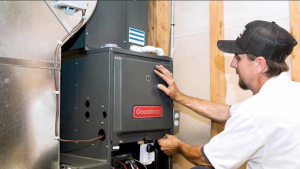
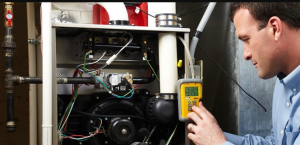
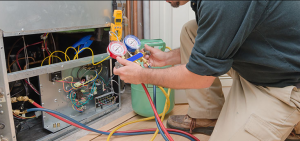
Enter Google site embed here

